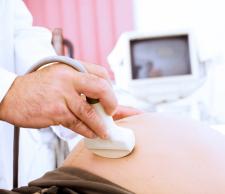Fertility Futility: Procedures Claimed to Boost IVF Success Lack Supporting Evidence
By Sandy Ong,
Newsweek
| 01. 12. 2017
Natalie Fitzpatrick, 29, had been through three rounds of in vitro fertilization when her doctors suggested she try immunotherapy. Each of her IVF treatments had resulted in a miscarriage, and her doctors wanted to test her to see if there was something wrong with her immune system. But nearly $4,000 later, the additional testing proved fruitless. Fitzpatrick’s next two IVF cycles were unsuccessful—she miscarried once more—and she’s still trying.
Testing the immune system is one of a growing number of additional services offered to couples who can’t conceive through IVF treatment alone. Some clinics say they do it because certain antibodies can interfere with embryo implantation, but these claims are not backed by evidence. According to a study that appeared in the BMJ at the end of November, the same is true for many other extra services—of nearly 30 fertility clinic add-ons reviewed, only one increased a woman’s chances of having a baby. That was an endometrial scratch, in which a small nick is made in the uterus’s lining to increase the likelihood of an embryo implanting on it. And...
Related Articles
By Katherine Long, Ben Foldy, and Lingling Wei, The Wall Street Journal | 12.13.2025
Inside a closed Los Angeles courtroom, something wasn’t right.
Clerks working for family court Judge Amy Pellman were reviewing routine surrogacy petitions when they spotted an unusual pattern: the same name, again and again.
A Chinese billionaire was seeking parental...
By Sarah A. Topol, The New York Times Magazine | 12.14.2025
The women in House 3 rarely had a chance to speak to the women in House 5, but when they did, the things they heard scared them. They didn’t actually know where House 5 was, only that it was huge...
By Sarah Kliff, The New York Times | 12.10.2025
Micah Nerio had known since his early 30s that he wanted to be a father, even if he did not have a partner. He spent a decade saving up to pursue surrogacy, an expensive process where he would create embryos...
By Carter Sherman, The Guardian | 12.08.2025
A huge defense policy bill, revealed by US lawmakers on Sunday, does not include a provision that would have provided broad healthcare coverage for in vitro fertilization (IVF) for active-duty members of the military, despite Donald Trump’s pledge...




